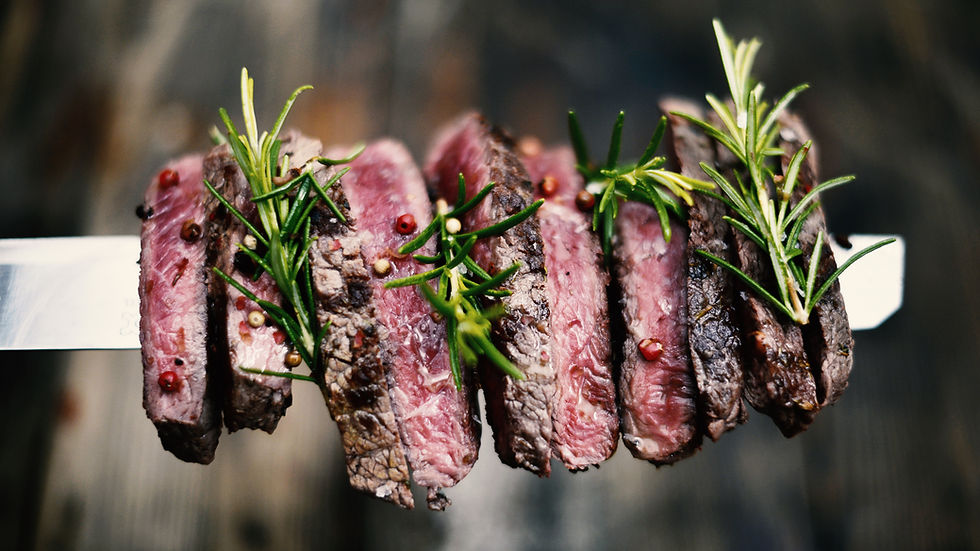Get ready for a trip back in time and discover the secrets behind Kobe beef!
- Leo Grebot

- Feb 24, 2024
- 2 min read
Updated: Mar 23, 2024

Secrets behind Kobe beef.
The history of Kobe beef begins in ancient Japan, in the 2nd century AD, when Wagyū beef was introduced to the country as a burden animal used in rice cultivation. At that time, Japan was an agrarian society and livestock played a vital role in daily life. However, due to the geographical isolation of the Japanese islands, Wagyū cattle remained genetically pure over the centuries .
Over time, different varieties of Wagyū cattle were developed in Japan, each with unique characteristics. One of the most notable varieties is the Tajima Japanese Black, which is raised in the Hyogo region, specifically in the city of Kobe. This region is famous for its climate, which is ideal for raising high-quality livestock.
The raising of the animals that produce Kobe meat is a fundamental part of its history. Japanese farmers follow strict guidelines in raising these animals to guarantee the excellence of the meat. The animals are fed a special diet and provided with meticulous care and attention. Additionally, the animals' quality of life is emphasized, including regular exercise and general well-being.
One of the highlights of raising Wagyū cattle is the "massage" technique applied to the animals. This practice consists of performing regular massages on animals to improve the distribution of intramuscular fat and achieve exceptional marbling in the meat. Massage is also believed to help reduce stress in animals, which contributes to meat quality.
Kobe beef is known for its marbled fat marbling, which gives it a unique flavor and texture. Fat marbling is a result of the high content of unsaturated fatty acids in Kobe beef, making it extremely tender and juicy. Additionally, this type of fat has a lower melting point, which means it melts at lower temperatures, providing an extraordinary sensory experience when tasting it.
The process of slaughtering the animals is also an integral part of Kobe beef production. To obtain the "Kobe" designation of origin, the meat must come from 100% Wagyu cattle of the Tajima Japanese Black variety, born, raised, suckled and slaughtered in the Hyogo region. This ensures that the meat meets the highest standards of quality and authenticity.
The popularity and recognition of Kobe beef in the culinary field have increased over the years. Its reputation as a gastronomic delight has spread throughout the world, making it one of the most sought-after and appreciated products by lovers of good food. However, due to exclusivity and strict production standards, Kobe beef remains a very select and therefore expensive product.
In short, Kobe beef has a rich and captivating history dating back centuries in Japan. From its introduction as pack cattle to its careful breeding and the development of special techniques, every aspect of the production of this meat seeks to guarantee its exceptional quality and unmatched flavor. Today, Kobe beef is considered a true gastronomic luxury and a unique culinary experience.
If you have the opportunity to try it, do not hesitate to enjoy it to the fullest and appreciate the legacy of centuries of tradition behind each bite .
Sources:
Wikipedia: Kobe Ox. https://es.wikipedia.org/wiki/Buey_de_Kobe
Anchovies Deluxe: Kobe meat, everything you need to know. https://www.anchoasdeluxe.com/es/blog/791_carne-de-kobe-todo-lo-que-necesitas-saber.html







Comments